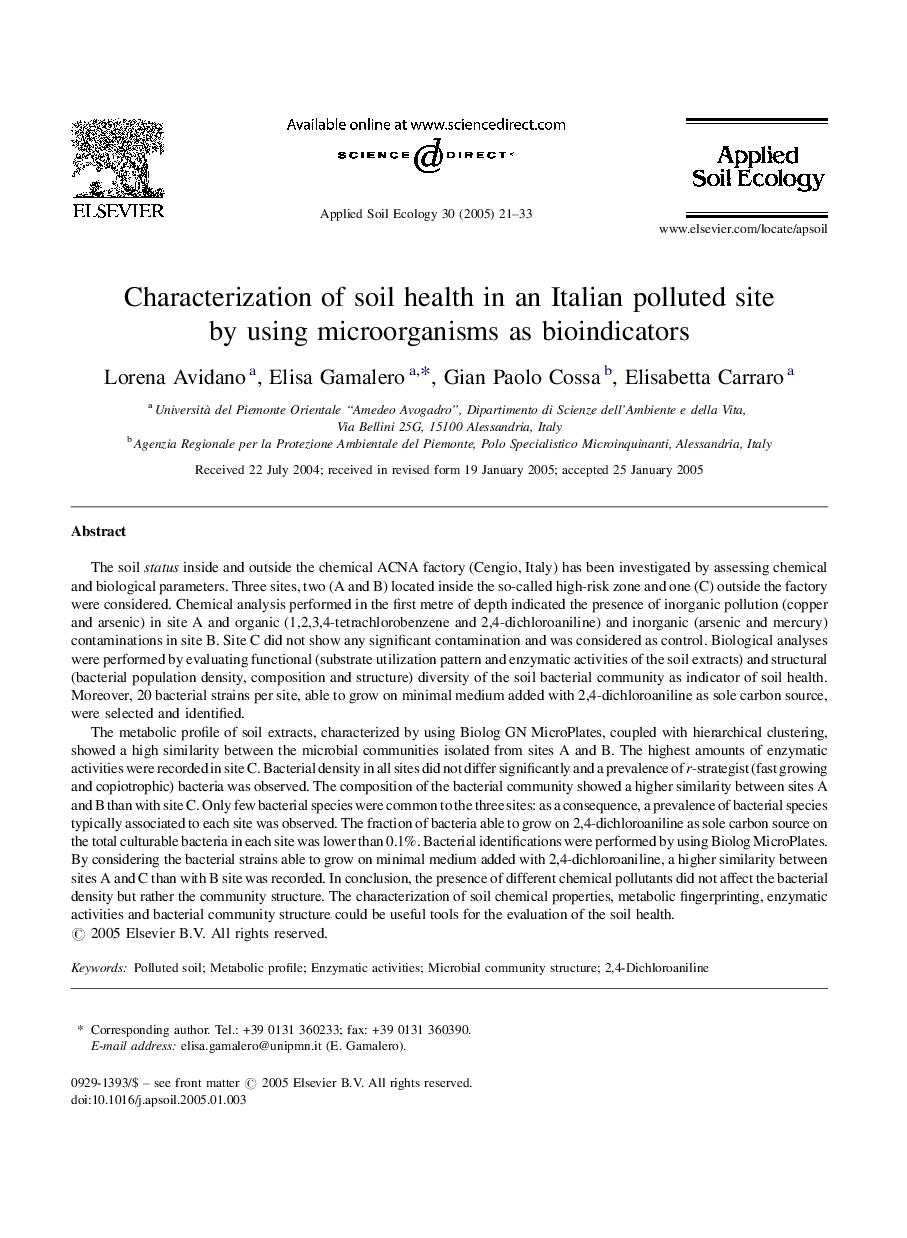| Article ID | Journal | Published Year | Pages | File Type |
|---|---|---|---|---|
| 9445226 | Applied Soil Ecology | 2005 | 13 Pages |
Abstract
The metabolic profile of soil extracts, characterized by using Biolog GN MicroPlates, coupled with hierarchical clustering, showed a high similarity between the microbial communities isolated from sites A and B. The highest amounts of enzymatic activities were recorded in site C. Bacterial density in all sites did not differ significantly and a prevalence of r-strategist (fast growing and copiotrophic) bacteria was observed. The composition of the bacterial community showed a higher similarity between sites A and B than with site C. Only few bacterial species were common to the three sites: as a consequence, a prevalence of bacterial species typically associated to each site was observed. The fraction of bacteria able to grow on 2,4-dichloroaniline as sole carbon source on the total culturable bacteria in each site was lower than 0.1%. Bacterial identifications were performed by using Biolog MicroPlates. By considering the bacterial strains able to grow on minimal medium added with 2,4-dichloroaniline, a higher similarity between sites A and C than with B site was recorded. In conclusion, the presence of different chemical pollutants did not affect the bacterial density but rather the community structure. The characterization of soil chemical properties, metabolic fingerprinting, enzymatic activities and bacterial community structure could be useful tools for the evaluation of the soil health.
Related Topics
Life Sciences
Agricultural and Biological Sciences
Ecology, Evolution, Behavior and Systematics
Authors
Lorena Avidano, Elisa Gamalero, Gian Paolo Cossa, Elisabetta Carraro,
